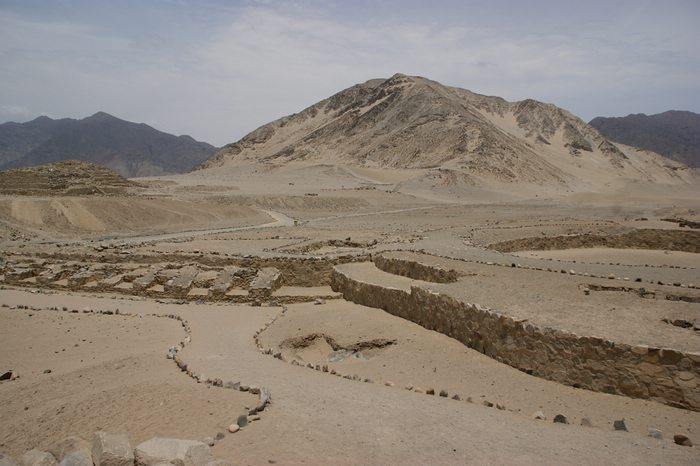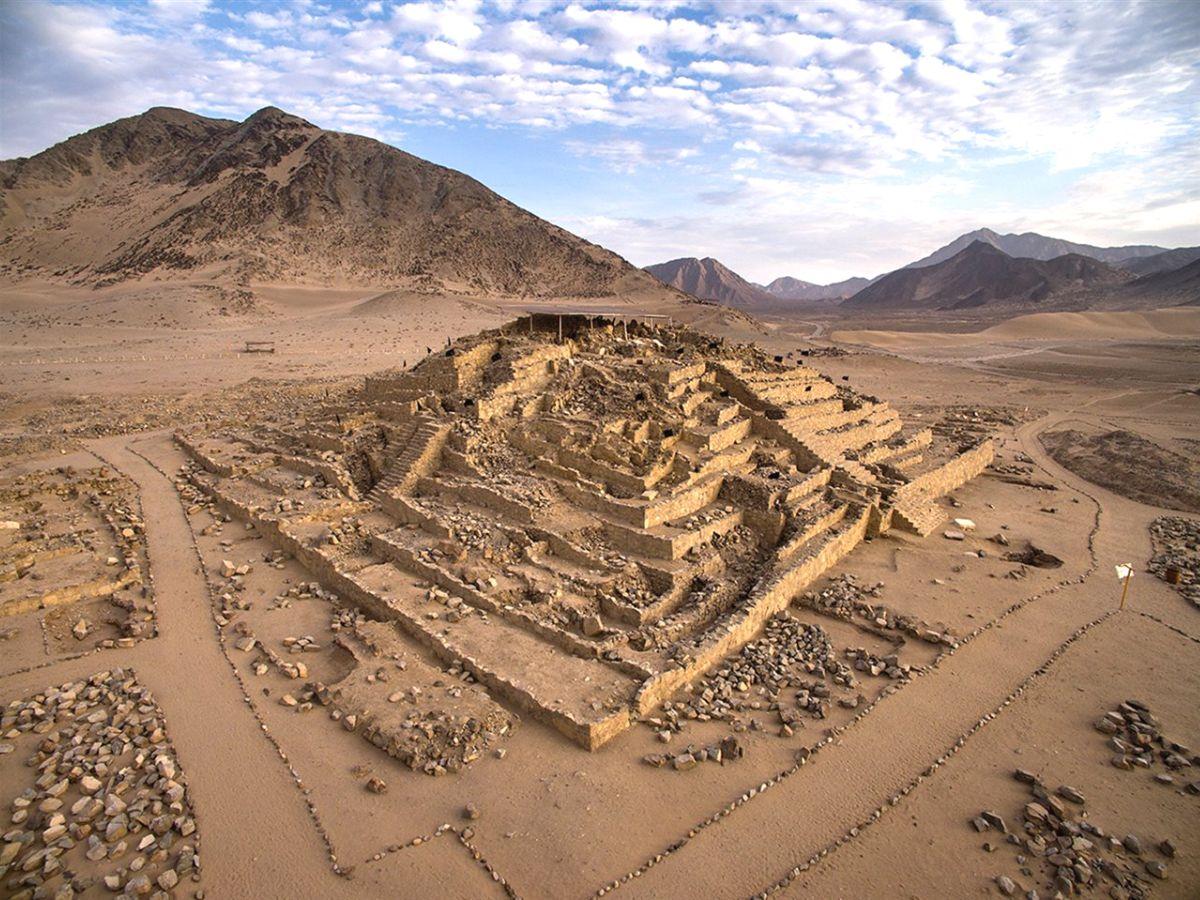Anthropology
Related: About this forumA 5,000-year-old fire altar has been discovered in the oldest center of civilization in South America
25.05.2025 - 07:10

The site is linked to the Caral-Supe civilization, a pre-Columbian society that emerged long before the Great Pyramids of Egypt were built and predates the rise of the Olmecs by nearly two millennia.
Archeologists have discovered a 5,000-year-old fire altar at the Era de Pando archaeological site, revealing new secrets about the oldest center of civilization in the Americas.
Era de Pando is located in the Suppe Valley in Peru, northwest of the sacred city of Caral-Suppe, and is part of the wider Caral archaeological zone.
The Caral-Suce civilization had up to thirty large settlements in the present-day Caral region, with the first center forming around 3500 BC.
Era de Pando is one such settlement, consisting of 48 structures located around a central space, including pyramidal buildings, temples, and various dwellings.
More:
https://www.bgnes.com/science/a-5-000-year-old-fire-altar-has-been-discovered-in-the-oldest-center-of-civilization
~ ~ ~

Discover Caral-Supe: Cradle of Civilization in the Americas
The Caral-Supe civilization developed independently in Peru 5,000 years ago. It may be unique because some claim that marine resources, rather than agriculture, led to its development.
Cradles of civilization are societies where humans developed complex social systems independently. Of the six, Egypt, India, Mesopotamia, China, and the Olmec civilizations undoubtedly formed thanks to agriculture. Yet Caral-Supe, on the coast of Peru, is neglected in traditional histories and may demonstrate a unique path to advanced development.
One hypothesis among the archaeological and historical community proposes that coastal communities with maritime foundations were the progenitors of this civilization. Caral-Supe was centered upon a sacred capital city originating 5,000 years ago, the oldest urban site in the Americas. Seventeen nearby settlements were part of this civilization, which controlled almost 700 square miles. Could a society without mass agriculture achieve these monumental feats?
More:
https://www.thecollector.com/caral-supe-cradle-of-civilization-americas/
~ ~ ~
April 2, 2014 —
Caral: The Oldest Civilization in the Americas
Caral was already a thriving metropolis when the great Pyramids of Egypt were only being built!!
- click for image -
https://tinyurl.com/yvfr9en7
Caral, the oldest civilization in the Americas. Image by Erika Vicente from Pixabay
Caral (also referred to as Caral-Supe) is a stunning ancient city located in the Supe Valley of Peru. Today travelers can visit the Caral Ruins, which are believed to be the remains of one of the oldest cities in the Americas. Rewind time and the city of Caral was once a thriving metropolis for its local residents around the same time that the Egyptian pyramids were being built!
Caral: A brief history
The Caral Ruins are located about 200 km (125 miles) north of Lima in Peru.
Paul Kosok, an American history and government professor, was one of the first to study Caral in 1948. At the time, his findings were largely ignored due to the fact that he didn’t find any typical and sought after Andean artifacts on site. Peruvian anthropologist and archaeologist, Ruth Shady, later took over the exploration of this desert city of pyramids.
The evidence collected suggests that Caral was inhabited some 5,000 years ago, between 2600 and 2000 BCE (Before the Common Era, or Before Christ). For comparative purposes, the Great Pyramid of Khufu in Egypt was built around 2600 BCE.

The remains of Caral are well preserved Photo by Roger D’Hondt
More:
https://www.peruforless.com/blog/caral
Judi Lynn
(163,498 posts)
One of the most important and yet little-known cultures of the American continent is found in Peru. This is the Caral culture, whose capital was the city of the same name, which is now celebrating twenty-five years of excavations. We have spoken with Dr. Ruth Shady, director of the Caral archaeological zone, who has told us many things about this place, located in the Supe Valley, on the north-central coast of Peru, a site that is, with its 66 hectares, one of the largest in America, and about the civilization that built it, the Caral culture, considered the oldest in the American continent.
Agriculture, Fisheries, Trade
The Caral based their economy on agriculture and fishing on the coast of the Pacific Ocean, in the so-called Supe port. In the region, small settlements began to develop very early between the years 3000 and 2700 BC, which interacted with each other and exchanged products, even with other more distant populations. More complex societies were formed and between 2700 and 2550 B.C. the great city of Caral was built, a place with monumental architecture. It was at this time that new urban centers began to appear in the Supe Valley and in the neighboring Pativilca Valley, between 2550 and 2400 BC. The influence of the Caral culture was such that it reached the north of Peru, as can be seen in the Ventarrón deposit, in Lambayeque, or in other places in the south, such as in the valleys of Chillón, Rímac, Asia.
Technological Advances
As Ruth Shady exclusively explains to us, the Caral were an advanced society that developed great scientific and technological knowledge that they transmitted to other neighboring cultures. They did not live in walled cities nor did they manufacture weapons, but they did exchange resources, goods and knowledge with populations from the mountains and the jungle. They also had access to the Spondylus mollusk, very characteristic of the tropical waters of Ecuador and which played an important role in Andean societies; They also obtained sodalite, a mineral that comes from Bolivia, and even replicated, in the burial of a child, the treatment given to the dead in the Chinchorro culture of Chile, which shows that the Caral were related to other very distant cultures. geographically.
A Monumental Architecture
As an archaeologist, Dr. Shady insists that the importance of Caral is reflected in the elements of its architecture, of symbolic significance –assumed in turn by other cultures–: sunken circular plazas, niches, double-jamb doors, earthquake-resistant technology. , stepped platforms... Caral was an urban complex made up of different constructions. It lacks a walled enclosure and is located on a terrace that protected it from possible natural disasters.
The buildings were built with stone and wood from fallen trees. Six pyramids are preserved, each with a central staircase that is oriented towards certain stars. All these buildings had an altar with a central fire (circular or quadrangular in shape) and underground conduits that channeled the energy of the wind. In these complexes religious ceremonies were to be carried out that included the burning of offerings to the divinities. But one of the most striking constructions are its two enigmatic circular plazas, located in front of two pyramidal buildings. Quite possibly also related to religious ceremonies.
More:
https://www.incatrailmachu.com/en/travel-blog/caral-peru-pyramids